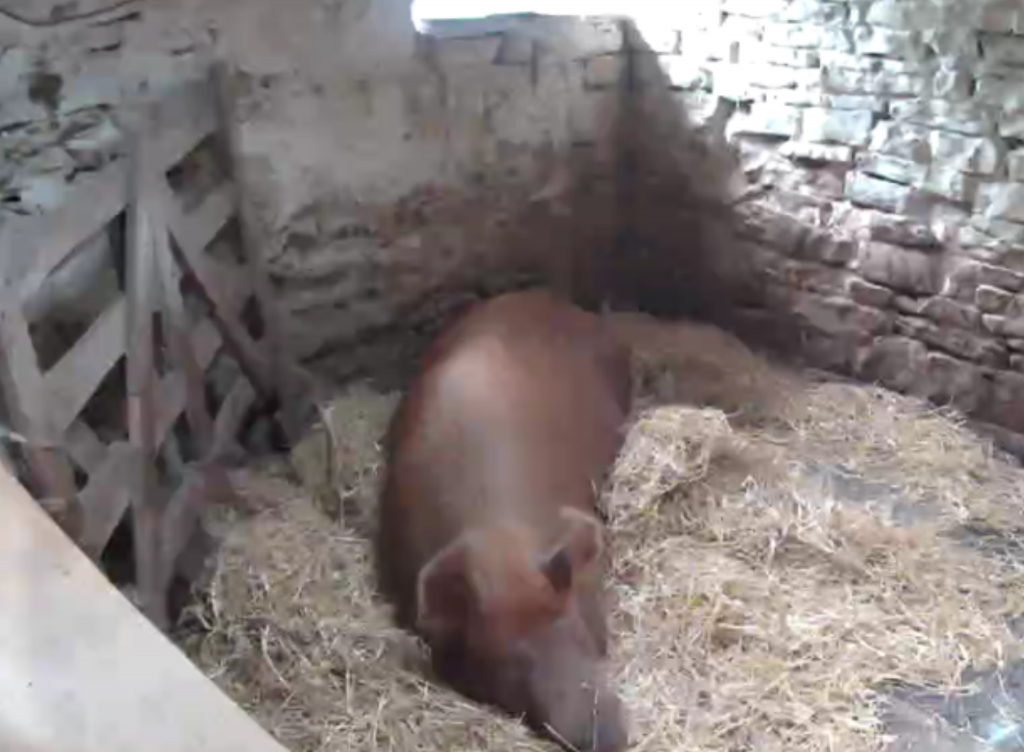I’ve now established a fairly reliable procedure to follow in the run-up to farrowing which seems to work for me and more importantly seems to suit the pigs too!
About 5-7 days before the due date, the expectant mother is moved into the farrowing shed – a fancy sounding name but in reality a stone outbuilding nearer the house which is already setup for piglets and also makes my life easier when checking on them.
There is a small “creep” area in this shed which has been partitioned off using wooden sheep hurdles so that only the piglets can get into it. This area has a heat lamp so they keep warm without huddling around their mother rather than potentially being stood on.

Experience has shown that after moving in the sow very quickly settles into a new routine in this shed with regular trips out for exercise. It’s not quite the solitary confinement that it may appear at first glance and they do still get access to fresh air and grass. However the primary goal of using the shed is to ensure the lead-up and actual farrowing are as stress-free for the pig (and me!).
This is also a good time to deal with a worming injection so that the protection that gives can be passed onto the unborn piglets. For this purpose, we use Panomec which is an injectable form of Ivermectin administered subcutaneously. We don’t want (or need) to give any unnecessary medication but this is a good way to get a specific job done with the minimum of fuss – provided the sow is busy eating at the time of course!
Another important step in the preparation is getting a “farrowing kit” ready in advance. It’s always a good idea to have everything you might need easily to hand during the farrowing rather than having to rush around looking for things. This includes the obvious things like iodine spray, cloths and a travel mug to keep my tea warm. It also includes other less obvious items such as some gloves, a marker spray (for identification purposes), a hot water bottle and a handy sized carboard box with straw for any piglets that need some warming up – although that’s perhaps more important in winter than for a July farrowing.
This will be the third litter for Fifi so I’d hope she’s getting the hang of it all now and won’t need any help from me. Her previous litters have both been 9 piglets which is a good litter size for Tamworths at least. Hopefully she can keep these numbers up again but I’ll settle for whatever she gives us just so long as mother and offspring are healthy
I’ve recently reviewed the records I’ve kept on previous litters from all our sows and that indicates an average gestation of 113 days. Based on my calculations from the time Fifi was in season when the boar was visiting, I’m getting ready in plenty of time before Monday 12 July!